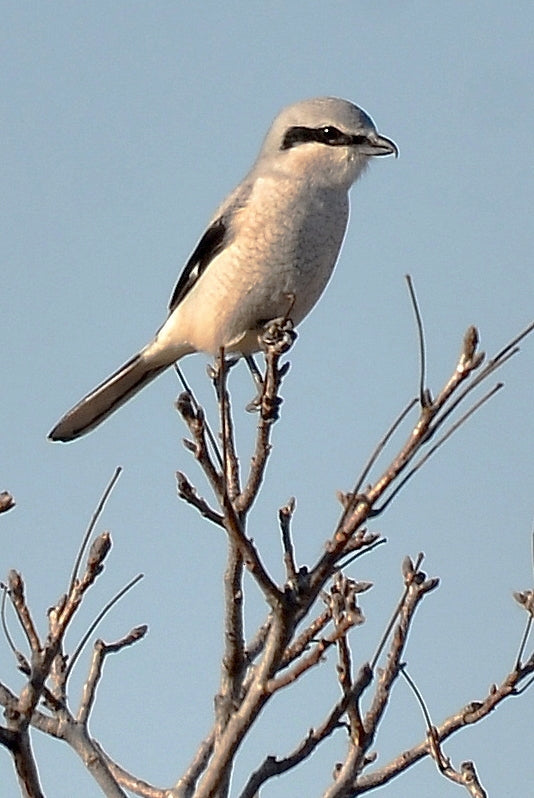Offer
Provide additional details about the offer you're running.
Provide additional details about the offer you're running.
Provide additional details about the offer you're running.

Feature Image By CheepShot (Northern Shrike) [CC BY 2.0 (http://creativecommons.org/licenses/by/2.0)], via Wikimedia Commons
Given the time of year, we turn to a migrating species that will soon become highly visible in most of southern Canada and the northern United States. The Northern Shrike is a highly predatory songbird, often killing more prey, when possible than it can immediately eat or feed to their young. These birds will, however, utilize the prey at a later time, rather than wasting it, an activity often associated with living in harsh climates where food can and will become scarce.
These birds spend the summer months nestled in the frigid Canadian north, scattered throughout the Canadian Territories and Alaska. As the winter months approach, the Northern Shrike will migrate to slightly warmer climates found in the southern portions of Canadian provinces and throughout the western, mid-west and northeastern United States. These birds prefer open country resembling the taiga and tundra of the north and will take to tall perches in fields, wetlands and forest edges during the winter months.
The Northern Shrike is a medium-sized songbird with a rather large head that sports a black mask. Their plumage is of a grayish-black colouring across their backside with a fairly white throat and chest colouring. The wings and tail of these northern songbirds are black but do feature white patches and outer feathers and their head is finished with a hooked bill.
Both the male and females of this species sing throughout the year, but the males tend to get the most play, particularly in late winter and the early spring months. Their song is somewhat difficult to nail down but is mainly made up of a variable sequence of harsh notes, chatter, trills and whistles. They also actively call for a number of reasons including dominance and distress.
High Quality Blend